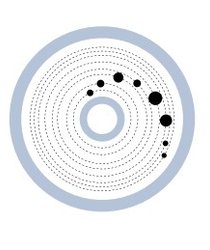
Open lecture
From Bose-Einstein Condensates of Polaritons to Optical Neurons
Konwersatorium im. Jerzego Pniewskiego i Leopolda Infelda
Wydział Fizyki UW
April 3, 2023, 11 a.m.
ul. Pasteura 5, Sala 0.06
On Monday, April 03, at 11.00 am, the Jerzy Pniewski and Leopold Infeld Colloquium of the Faculty of Physics will be held in room 0.06. Our guest will be dr hab. Barbara Piętka, prof. UW from the Faculty of Physics of the University of Warsaw. She will give a lecture entitled:
FROM BOSE-EINSTEIN CONDENSATES OF POLARITONS TO OPTICAL NEURONS
In her lecture, Prof. Piętka will present the results of recent research on coupling light matter in semiconductor crystals, which leads to the formation of quasiparticles called polaritons. The prospect of using polaritons in the field of optical neuromorphic computing will be discussed.
Before the Colloquium, at 10.30 a.m., we invite you to informal discussions over coffee and cookies in the hall in front of room 0.06.
Barbara Badełek
Jan Chwedeńczuk
Jan Kalinowski
Jan Suffczyński
dr hab. Barbara Piętka, prof. UW, Faculty of Physics, University of Warsaw
FROM BOSE-EINSTEIN CONDENSATES OF POLARITONS TO OPTICAL NEURONS
Summary:
Bose-Einstein condensation is a phenomenon of a degenerate gas of bosons. For a long time, this branch of physics has been reserved for cold atoms. Since the realization of half-light-half-matter quasiparticles in optical cavities, so-called exciton-polaritons, Bose-Einstein condensates can be observed at room temperature. Exciton-polaritons (in short polaritons) are quasiparticles resulting from the coupling of light to excitation in the optically active material. Polaritons can be formed in a wide range of materials from semiconductors to dielectrics filled with polymers, proteins, or perovskites.
Polariton condensation is a non-linear process that is accompanied by strong laser-like emission from the cavity. This effect occurs at the ps timescale and at a single pJ in pulse energy, making this system ideal to
implement fast and energy-efficient photonic data processing. I’ll discuss how this nonlinearity can be used for computation that mimics the operation of a human brain. I’ll show that optical microcavities in the strong light-matter coupling regime can behave as optical neurons.
2023-04-03_konwersatorium_plakat.pdf - Poster
